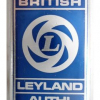Do you place a plain (flat) washer under the crank pulley bolt ?

Loctite 243 Uses

Best Answer Spider , 12 October 2020 - 06:56 PM
I keep reading that lock tabs are too soft these days, so I’m going to use a thread lock instead.
Is 243 ok for the crankshaft damper pulley bolt, cam nut and also the flywheel bolt? How is the torque setting affected and how long should it be left for a full cure?
The 243 is what I've been using on those fasteners (and others) for the past 15+ years now.
I use the factory Torque numbers for all, except for the Damper and Flywheel Bolts. The Factory Number here for the Damper is 70 ft / lb, however, nearly always I found that was not enough, even when I using locktabs. Chatting with a few other locals, they have found the same. I Torque these up to 100 - 110 ft/lb and that does the trip. One of our local commercial shops does them to 125 ft/lb, I had my nose in one of Clive Trickey's books the other day (he was a well known racer in the 60's) and I note he was doing them to 150 ft/lb ![]()
I've found going to 110 ft/lb hasn't been an issue and in fact, solved one. I'm sure the reason this fastener tends to work loose is due to the normal Torsional Vibration at that end of the Crank, effectively working like a rattle gun.
The Flywheel Bolt I do to a minimum of 150 ft/lb. I've not had issues with the bolt itself coming loose here, but I've found the 115 ft/lb quoted by the factory very marginal to totally inadequate to stop fretting of the Flywheel on the Crank Taper. Looking at the issues many have removing their Verto Flywheels, it's apparent to me that's especially with that set up, 115 isn't nearly enough. IMO, the 'secret' to making Flywheel Removal painless is to get it on very tight in the first place, yes, that sounds back to front I know, but when they sit tight and not fret, they will come away clean and fairly easily, however, when they Fret, I think we've all seen many here have to take to the flywheel with an angle grinder to get them off and a few have had buggered crankshafts from fretting. Tight is right ![]()

#46

Posted 29 June 2025 - 06:47 AM
2 user(s) are reading this topic
0 members, 2 guests, 0 anonymous users














